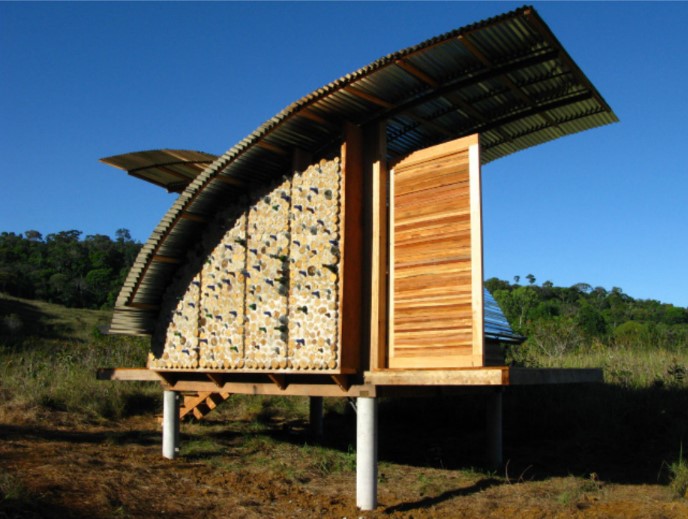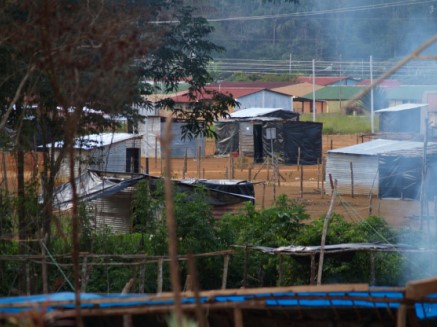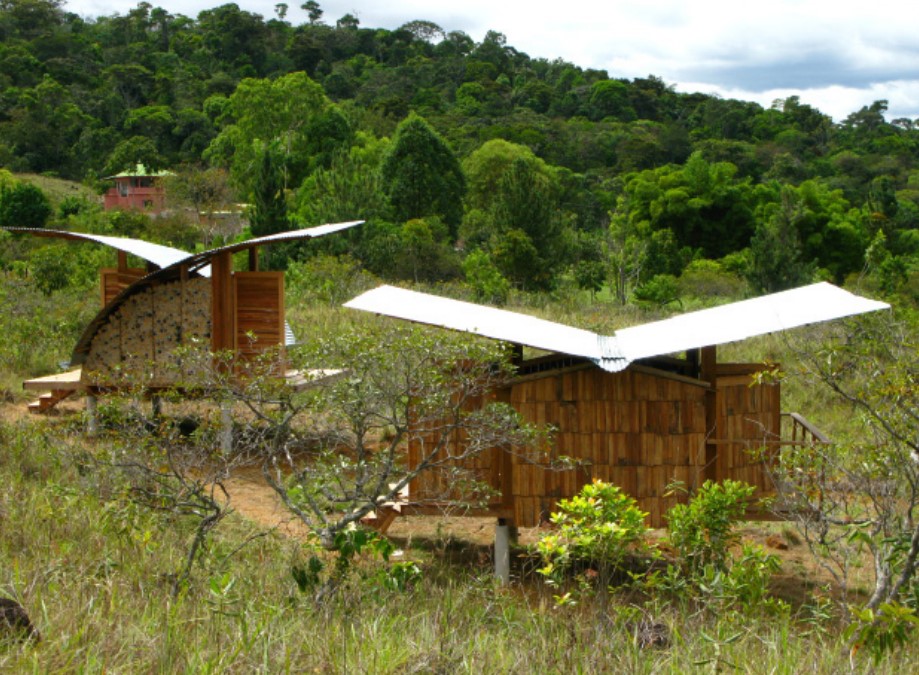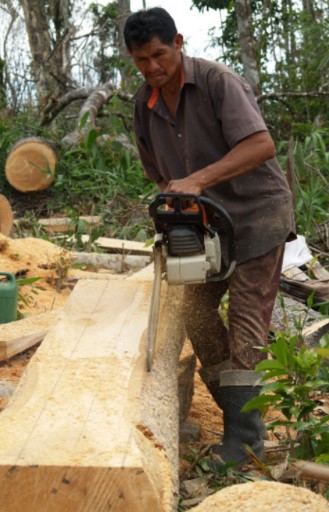
The Wind Catcher Cabana. Photo: Kristofer Nonn
| Location | Santa Elena, Venezuela |
| Date | 2007-8 |
| End User | Peace Villages Foundation volunteers, local workmen |
| Client | Peace Villages Foundation |
| Designer | Kristofer Nonn |
| Funder | Peace Villages Foundation |
| Cost per unit | $500 USD |
| Units | 2 |
| Area | 15 sq m/170 sq ft |
| Occupancy | 2 people |

“The Invasion” —a squatters’ shanty town. Photo: Kristofer Nonn
Many local villagers in Santa Elena, Venezuela, live in hastily constructed shacks that were thrown together during “the invasion,” a recent population influx spurred by government-supported mining initiatives. The shacks are little more than tin-covered timber frames sitting directly on the ground. The wooden posts are vulnerable to termites and mold, and the overall structure is susceptible to many problems. Few windows cause inadequate ventilation; loose construction allows snakes, spiders and rodents to enter at will; and the tin roofs shed rain onto the dirt roads, eroding foundations and pathways.
To counter these issues, Manfred Monnighoff, director of the Peace Villages Foundation, decided to use the foundation’s Ecological Building Program to construct a healthier, more sustainable alternative to the shoddy abodes. Wisconsin-based designer builder Kristofer Nonn led the program that spawned the Eco-Cabanas.


left image: Two cabanas sit in the Venezulan savannah. Photo: Kristofer Nonn
right image: Bottle bring light through the concrete and wood walls. Photo: Kristofer Nonn
The design team’s approach focuses on reconstituted and economical materials rather than radical new ideas. Nonn designed the cabana’s foundation piers of precast concrete to prevent rot and termite damage. He integrated shelving into the framing and cladding system and embedded scavenged glass bottles into a concrete wall to let in natural light. The roofs of the two units angle toward each other to channel rainwater into storage barrels, providing a much needed alternative to polluted river water. The structure’s wood finish is a mixture of transmission fluid and wax.

cuts boards for the cabanas. Photo: Kristofer Nonn
Gathering of local materials was complicated by the separate laws that govern the use of natural resources for the region’s large indigenous population and the highly autonomous national government. Indigenous residents are free to cut and sell wood as they please, but others are required to obtain special permits to prevent large-scale logging and protect the rainforest. One neighbor who started his own cabana had to temporarily stop work due to this thorny process. (Nonn circumvented the restrictions by having his construction crew, who were of Pemon descent, accompany him into the woods to cut lumber for the cabanas.)
Nonn also incorporated some traditional practices like raising the structure on stilts. This method of building was used extensively in pre-Colombian times, but Monnighoff speculates that the stilts fell out of favor because they were considered technologically inferior to Spanish-style stone and concrete foundations.
There was some initial skepticism about Nonn’s building methods until he proved the cabanas could withstand Venezuela’s drenching rain. Nonn remembers sleeping in a cabana during the first storm after it was built. Several people entered during the night to see if it leaked. Despite many doubts, the drips never came, and interest in the cabanas subsequently spread. Officials are now considering using the Eco-Cabana design to create low-cost, low-impact housing in the Brazilian border town of Pacaraima.
Nonn took it as a compliment when one of the builders joked that he was going to steal the structure. “Tony [a Pemon carpenter] looked at the curved roof one day and said, ‘I’ll call a couple of my friends and we’ll just carry this off home with us,’” Nonn recalls. “I wouldn’t doubt that four of them could do it, either.”















READ OR LEAVE A COMMENT